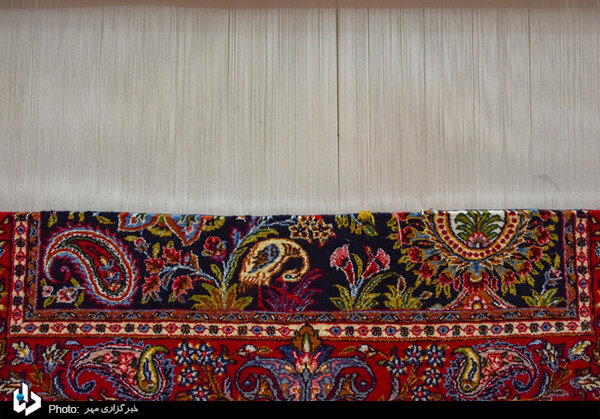Iranian handicrafts: Sarouk carpets of Arak

TEHRAN - Little is known about the history of handwoven carpets being made in Arak, the capital of Markazi province, and its surrounding villages.
Sarouk is one of the most famous carpets woven in the province. In comparison with other kinds, it is the thigh and rather fine. Local weavers use a special kind of method to insert the wefts. After each row, they insert two wefts, and between each five to ten rows another weft is inserted.
Sarouk patterns are inspired by cursive arabesque patterns of Isfahan carpets, but they are recreated with fewer details and in a red background, and paisley in the form of diamond in blue, according to Visit Iran.
Sarouk with the pattern of paisley can also be found in Qom, Qazvin, Saveh, and Golpaygan. Sarouk weavers usually decorate the margins using “Samavari” and “Kharchangi” and classic “Shah Abbasi” motifs. A historical sample of Sarouk carpet was used in the bedroom of Reza Shah, the founder of the Pahlavi dynasty, and is now kept in Tehran’s Green Palace Museum. It has been designed by plain paisleys and woven of silk.
Based on the designs, Sarouk carpets can be categorized into four periods. First, designs from more than one hundred years ago when Arak carpets changed a trading product. During the second period, foreign trading companies developed in Arak. This period dates from the beginning of the reign of Naser al-Din Shah Qajar to the early years of the Pahlavi dynasty. The buyers had their special culture and taste and, therefore, designs were heavily affected by European motifs and color palettes. It was during these years that using fine threads called “Farangi (foreigner)” became common.
The third period lasted from 1310 to 1370 (the 1930s to 1970s) when, by the efforts of the Institute of Fine Arts, the carpets of Arak and some other cities were restored. In the fourth phase, which is still going on, the Arak carpets are produced locally.
Persian carpets are sought after internationally for their delicate designs and their good quality. Among Persian carpets, particularly those of the classic period, the medallion may represent an open lotus blossom with 16 petals as seen from above, a complex star form, or a quatrefoil with pointed lobes.
Medallion carpet is any floor covering on which the decoration is dominated by a single symmetrical centerpiece, such as a star-shaped, circular, quatrefoil, or octagonal figure. The name, however, is sometimes also given to a carpet on which the decoration consists of several forms of this kind or even of rows of medallion figures.
AFM
Leave a Comment